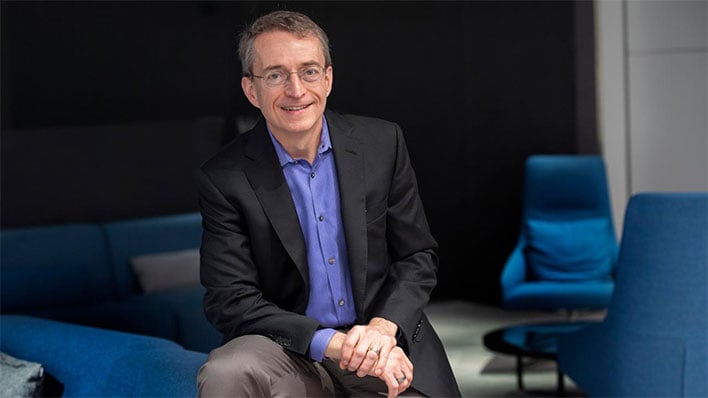Intel CEO: I Haven't Lost Share To AMD, I've Given Share To AMD

By all accounts, AMD is back in the game with its Zen architecture, and has especially hit its stride with Zen 3. From the desktop (Ryzen) to the data center (EPYC), AMD has been gaining ground on its rival, and at times has even laid claim to the performance crown. Be that as it may, Intel CEO Pat Gelsinger has a very interesting perspective on Intel's market share losses and AMD's gains.
"I haven't lost share to AMD, I've given share to AMD, because I didn't have capacity. So a lot of this is just catch up to our growing market and years of under investment," Gelsinger said at the 25th Credit Suisse Technology Conference.
That's quite the statement. It's also a truncated one in need of context. Gelsinger was responding to a question about CapEx and Intel's core business playing catch-up with the lack of supply, as well as the chip maker's massive investments in capacity. The person who posed the question pointed out that Intel's investments seem fueled by a "demand curve that looks very aggressive," and that margins could suffer if Intel's projections are off.
A valid concern, though from Gelsinger's perspective, he's essentially saying that Intel conceded some CPU share to AMD because it did not have enough capacity to meet demand. In other words, some of AMD's gains are situational and opportunistic, versus customers jumping ship for a perceived superior product line-up.
We imagine people will have some strong opinions about whether that's true or not. From our vantage point, Gelsinger's explanation is probably partially accurate for some percentage of customers that bought AMD hardware, because they couldn't get their needs met by Intel. But at the same time, it's probably not the sole reason, and maybe not even the biggest one.


It's a tricky subject to parse because what applies to one market segment doesn't necessary translate to another. Looking on the consumer side, for example, the Ryzen 5000 series based on Zen 3 has been a stellar option to build around. High core and thread counts combined with a mature platform, a long-lived socket (AM4), and what had been cutting-edge technologies (like PCIe 4.0) made Zen 3 highly tantalizing. And it is still is, with a Zen 3 refresh coming soon to boot. And so AMD has been able to make some impressive strides among home consumers.
We don't closely follow market share gains and losses within the business and data center segments, in part because those numbers are a little more difficult to ascertain. But we know from earnings reports that Intel is doing quite well in those areas, financially (and across the board, really). Even so, it's notable that EPYC has allowed AMD to recently claw its biggest sequential jump in data center market share in 15 years.
"We had outstanding year-over-year revenue growth across all of our businesses and data center revenue more than doubled. Our increased full-year guidance highlights the strong growth we expect across our business based on increasing adoption of our high-performance computing products and expanding customer relationships," AMD CEO Dr. Lisa Su said in a statement earlier this year.
So, make of Gelsinger's off-the-cuff statement what you will. As to the broader topic of overshooting capacity with Intel's investments, Gelsinger says there's zero chance of having spare capacity next year or even the next several years. But if it comes to that in 2025 or 2026, Gelsinger won't fret.
"Let's get to 2025 and 2026 and we say we've overshot a little bit. I have three uses for that spare capacity. One is go get more market share," Gelsinger said. "If I have leadership products, the leadership process, I'm going to do so with good margins, gain market share back. Second is, I've also built into our business model that we use foundries, external foundries as well. So, if I have too much capacity, I'm going to pull wafers back from the external foundries and run them internally at better margins. Third, I go win more foundry customers."
It's an interesting perspective for sure. If you're interested and have 47 minutes to spare, you can listen to the full chat online.

